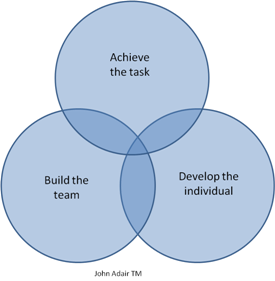The 3 dimensions of customer service
Do you work directly or indirectly with customers?
If the answer is yes, then you provide customer service.
In a dedicated customer service environment, like a call centre or corporate helpdesk, customer satisfaction (CSAT) is a prominent phrase. In such an environment, customer satisfaction is measured through surveys and feedback. In a non-dedicated environment, customer service is only a small part of the job, but the principles are the same. You need and want the customer to be happy with the service you provide.
 hbspt.cta.load(455190, ‚aaa71860-e705-4a7e-b8e5-ab6e16849d2e‘, {});
hbspt.cta.load(455190, ‚aaa71860-e705-4a7e-b8e5-ab6e16849d2e‘, {});
Your CSAT score – getting it from good to great
A happy customer = a returning customer. Because you are dealing with the expectations that people have of you, customer satisfaction means something else for each customer. There are many factors that can influence your customer’s satisfaction. But even though customer satisfaction means different things to different customers, all customer expectations fall in to what is called ‚The three dimensions of customer service.‘
The 3 dimensions of customer service
The business dimension
The practical need of your customer. The business dimension is the reason why they are contacting you. Something’s not working. There’s an issue to solve or a question to answer. Providers who work too much in this dimension are focussing on solving the query and not enough on the person making the query. Customers feel the interaction was too impersonal or too technical and their CSAT score reflects this.
The human dimension
The human need of your customer. Customers want respect, attention, assurance. They want to feel important. Addressing customer needs in this dimension successfully has a larger overall impact on the long-term satisfaction of your customer than addressing their business need – even if you can’t answer their query immediately.
The hidden dimension
The hidden dimension is all the things that are going on behind the scenes for you and the customer. For the customer, it’s a set of expectations that they have of the service. For the provider, it’s the processes and procedures that must be followed during the interaction. Your ability to address customer expectations and the hidden aspects of your job can have a large impact on your CSAT score.
Achieve customer satisfaction by focussing on the human dimension
Although balancing your customer’s needs in each of the three dimensions is paramount in achieving an excellent CSAT score, it’s the human dimension where people feel they are cared about and listened to. The efforts that you make in the human dimension will pay off for you on their CSAT score.
A practical example
Here are two partial transcripts of identical queries that one of our clients (a corporate helpdesk) received. When the two surveys came back, one had an average score, the other received the highest mark possible. During both calls, the problem was solved within minutes.
Customer query:
I received an email that said I had to upgrade my software. When I clicked on the link, nothing happened. But now the program won’t start either.
Transcript 1
Customer: How am I supposed to work now?
Helpdesk: I’ll fix it for you. Just hang on for just a minute.
…(customer put on hold)…
Helpdesk: Okay. I’ve resent you the mail with a new link. It should work now. Call back otherwise.
Customer: Thank you.
Transcript 2
Customer: I don’t believe this. I have an important deadline.
Helpdesk: I need to put you on hold for a minute, while I check XYZ on our end. I’ll be right back.
…(customer put on hold)…
Helpdesk: Thanks for waiting. Within the next few minutes, you’ll receive an email with a new link. This time, the upgrade should work just fine. Do you want me to wait on the line while you try it?
Customer: No, that’s okay, I can call back if it doesn’t work.
Helpdesk: I’m very sorry about this. I understand this is the last thing you need when you have a deadline. In any case, I hope it’s all sorted now.
Customer: Me too. Thanks.
What is good customer service, in your opinion?
Think about excellent customer service that you have received. What sticks in your mind the most – is it the time it took to solve the problem, or how the provider addressed your human need? What specifically did the provider say or do that made you a satisfied customer? What does someone have to do for you to score a „perfect 10“ on a feedback form? For some it is the effort the provider took to make sure the problem was solved. For others it’s the fact that it wasn’t a complete hassle to get someone on the line.
What is good customer service in your opinion? Let us know.














